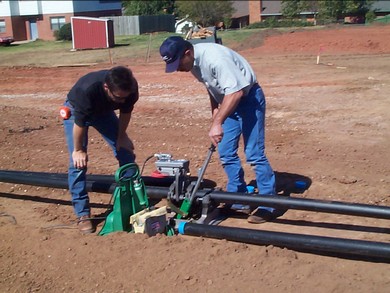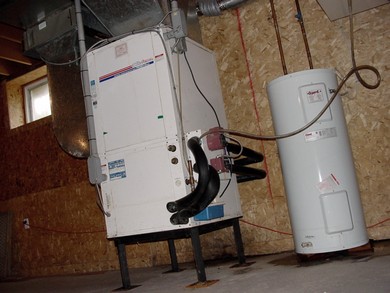If you were to travel into deepest space, the coldest temperature you’d ever find is -273 Celsius. That’s the point at which all molecular movement stops, and there simply is no more heat energy. Period. Scientists call this ‘absolute zero’, and nothing ever gets colder than that. But any temperature warmer than absolute zero means that some heat energy is present, and that’s the key behind the value and economy of heat pumps. If you’re searching for an efficient and effective way to both heat and cool your home, then the heat pump option is worth a look. And the first step is understanding how it all works.
 Harvesting heat energy from the natural world and bringing it into your home is one of the functions that heat pumps offer. If you invest in the right system it can save you about 70% compared to heating directly with electricity. To understand how, start by thinking of your refrigerator.
Harvesting heat energy from the natural world and bringing it into your home is one of the functions that heat pumps offer. If you invest in the right system it can save you about 70% compared to heating directly with electricity. To understand how, start by thinking of your refrigerator.
Somewhere on every electric fridge you’ll find external coils that get warm as the system operates. They’re usually at the back (covered in dust), and the warmth you feel as you touch these coils is the heat energy drawn from inside the fridge and moved outwards into the room. This energy movement is what keeps your food cool, and it’s the same principle at work in a heat pump system. Both have the same basic parts, except that the warm and cold halves of the system are separate in a heat pump. The coils found on the interior half of the system equate to the coils on the back of your fridge. The “fridge” side of the heat pump system is located outdoors.
Even on a cold winter day, there’s heat energy to be harvested from outside, heat that can warm your home when it’s collected and concentrated by the compressor and the coils of a heat pump. But heat pumps can also operate in reverse, functioning as an air conditioner to cool your home during the summer by moving heat outside. This two-for-one capability is one obvious advantage, but there’s another that vaults the efficiency of the heat pump option way beyond anything else.
 By designing the outdoor side of a heat pump system to include pipes underground or in a body of water, you gain access to an energy environment that’s much more consistent in temperature over the course of a year. This is called a ‘ground-source system’, and the best use just 30% of the energy required for ordinary electrical heating of a space. Instead of generating heating or cooling action directly, a heat pump simply gathers and moves environmental heat energy into your home during winter, or outside during summer. Sounds good, and it is, though there’s a downside. The cost of tapping into the earth or a nearby body of water with a network of pipes can run between $4000 and $9000 depending on your situation. This boosts total system cost to between $10,000 and $16,000 for a 2500 sq. ft. home.
By designing the outdoor side of a heat pump system to include pipes underground or in a body of water, you gain access to an energy environment that’s much more consistent in temperature over the course of a year. This is called a ‘ground-source system’, and the best use just 30% of the energy required for ordinary electrical heating of a space. Instead of generating heating or cooling action directly, a heat pump simply gathers and moves environmental heat energy into your home during winter, or outside during summer. Sounds good, and it is, though there’s a downside. The cost of tapping into the earth or a nearby body of water with a network of pipes can run between $4000 and $9000 depending on your situation. This boosts total system cost to between $10,000 and $16,000 for a 2500 sq. ft. home.
But once it’s installed, the pipe system is like having a natural gas well in your back yard. You now own your own energy field and it can never run out. The pipes have a minimum life span of 50 years, with system pay back coming under five, depending on the heating system being replaced.
Not everyone sees energy conservation as vital, and that’s too bad. But even if you don’t care about saving money or the planet, heat pumps still make sense. That’s because the best ground source heat pumps are designed to switch operating directions on a dime, enabling them to maintain temperatures within a tight 2 to 3Fº range inside your home. And that’s just one example of how building smarter can make sense, both for the environment and the quality and comfort of your home life.